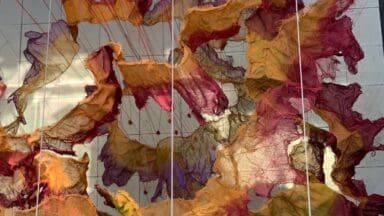
Every year, between 80 and 100 billion new clothing garments are produced globally, with 87% of the materials and fibres used to make clothing, ending up in landfills or incinerators.
Since the 20th century, clothing has increasingly been considered as disposable. The industry has become highly globalised, with garments designed in one country, manufactured in another, and sold worldwide at an ever-increasing pace. Over the past 15 years this has been accentuated by ever rising demand from a growing middle class across the globe with higher disposable income, leading to a doubling in production of ‘fast fashion’ over the same period.
To create a sustainable fashion system, we need to transform the way clothes are designed, sold, and used. A new system for the textiles economy is needed, aligned with circular economy principles.
Aiming to inspire positive change and drawing from Kew’s scientific collections, Material World explores the intertwined threads of nature, culture and creativity. The exhibition includes a myriad of striking works, from Nnenna Okore’s monumental art to Lottie Delamain’s living garden, bold designs from London College of Fashion, Michael McMillan’s journey into cotton’s history, and the League of Artisans’ celebration of craft.
“We are thrilled to be launching Material World, a festival that explores the transformative potential of plants and fungi in fashion. This celebration of sustainability brings together art, design, and horticulture to engage visitors in rethinking how we approach our wardrobes, highlighting the connection between natural materials and fashion to inspire positive change in how we consume. At RBG Kew, we believe in the power of plants to shape a better future, and Material World invites everyone to discover the role they can play in driving a more sustainable fashion industry,” said Paul Denton, Director of Creative Programming and Exhibitions at RBG Kew.
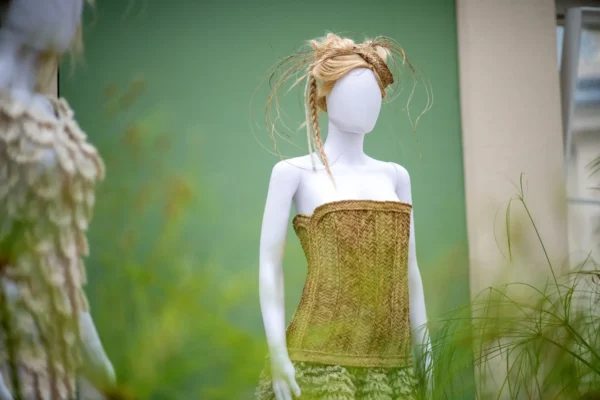
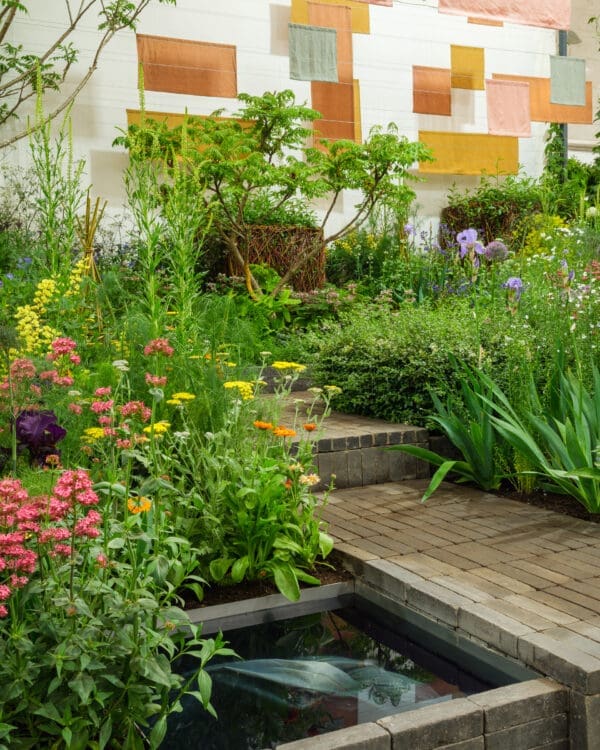
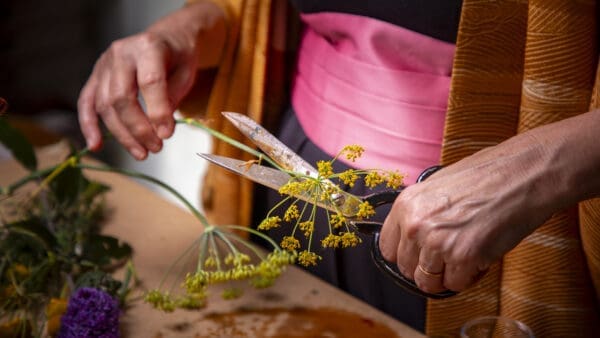
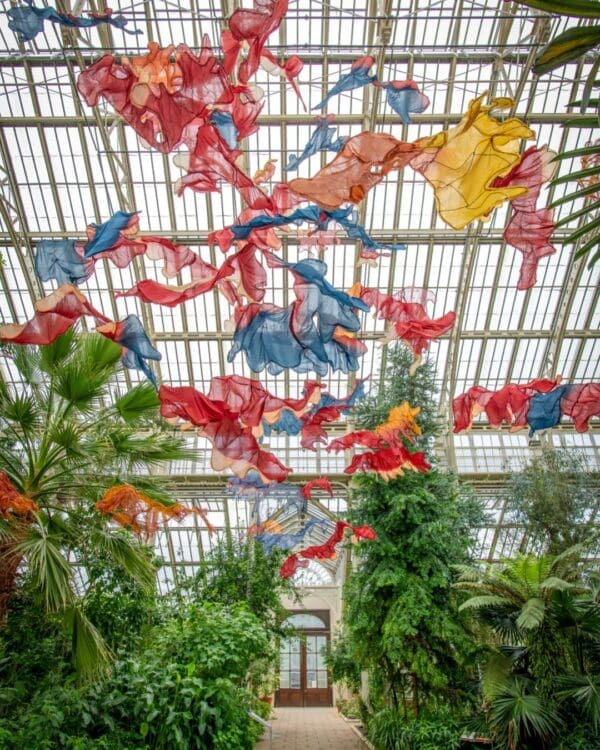
Exhibition highlights
A display created with London College of Fashion (UAL) alumni debuts radical new plant- and fungi-based designs curated by the current MA Fashion Curation and Cultural Programming students.
Silvia Acién’s regenerative knitwear from pineapple fibres, nettles, and Mediterranean grasses, weaving together rural heritage and future-facing craft. Acién also experiments with natural dyes made from invasive plants and bacterial pigments, reducing chemical and water use.
Eirinn Hayhow’s Healing Puffers and Plant Leather Garments use plant-stuffed biomaterial shells infused with foraged herbs like lavender, chamomile, hawthorn, rosemary and valerian. Her reimagined puffer jackets shimmer with crushed crystals and emit the subtle scent of dried herbs, exploring how fashion can support emotional and environmental well-being.
Jessie Von Curry & Vega Hertel weave Scottish seaweed, sourced using sustainable methods, into textiles including trousers. With over 12,000 known species, seaweeds require no land, fertiliser or freshwater, making them a vital ally in regenerative design.
Beth Williams envisions compostable garments designed to decompose straight back into the earth, challenging the extractive norms of mainstream fashion and imagining textiles that nourish the earth instead of depleting it. These biodegradable knit textiles are crafted from compostable, regenerative fibres, including pineapple (Ananas comosus), lotus stem (Nelumbo nucifera) and Seacell, a seaweed-eucalyptus blend.
Australian-born Nigerian artist, educator and environmentalist, Nnenna Okore’s exhibit is suspended 20m high in the Victorian glasshouse, crafted from biodegradable materials in the form of vast wing-like forms to create a vibrant and fluid installation, inspiring reflection on ecological responsibility.
Global Threads, a planted garden created by Lottie Delamain seeks to re-establish an often-lost connection between what we wear and what we grow. For thousands of years, we have worn plants, growing and cultivating them for their pigments and fibres, but fast fashion has severed the links between plants and what we wear. Beds feature plants that create dyes and fibres, bordered by ‘waste’ textiles from local charity shops to highlight the detrimental impact of fast fashion.
Natural dye specialist Kate Turnbull, textile expert Carry Somers and artist Becca Smith worked alongside Kew’s Youth Forum and attendees at Kew’s Community Open Week to craft Threads of the Canopy. This large-scale textile map of Kew Gardens weaves the stories of Kew’s trees – using naturally dyed embroidery threads, tree-based printing inks and hand-carved blocks, each individual piece of stitch-work represents a tree at Kew that provides dye or fibre for textiles.
In How Cotton Became King, writer and artist Michael McMillan, working with Dubmorphology and flautist Rowland Sutherland, has created a powerful 17-minute audio-visual installation tracing cotton’s entanglement with colonialism, capitalism and globalisation.
The Material World exhibition takes place in the Temperate House at Kew Gardens in London and runs until the 2nd of November, 2025.

